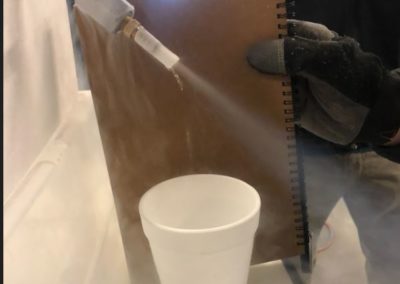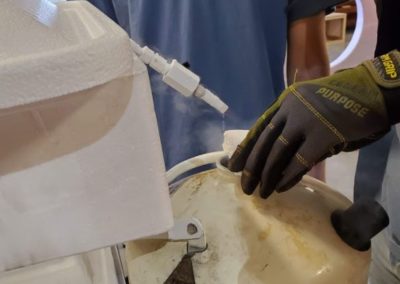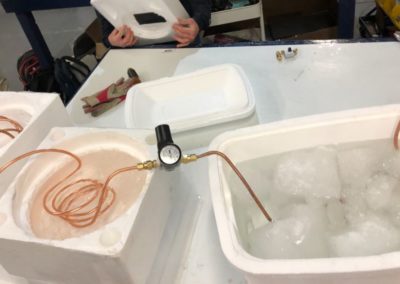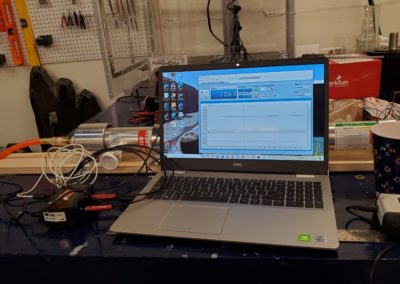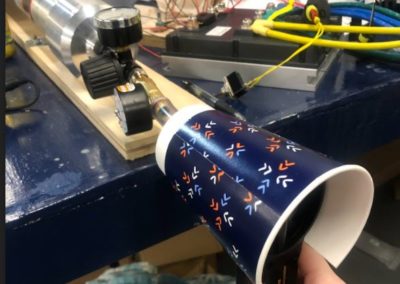Gas Powered Fire Extinguisher
Overview
Every year wildfires destroy millions of acres of land, cost billions of dollars and claim both human and animal lives. The current methods to fight wildfires puts firefighters’ lives at risk and involve chemicals that cause environmental repercussions preventing efficacy and long term sustainability. Working towards a solution, Venture Aerospace has developed an energy efficient drone with an adaptable base for a fire suppression system. Our project was to develop and test a fire extinguisher that uses liquid nitrogen to both displace the surrounding oxygen and reduce the heat from radiation.
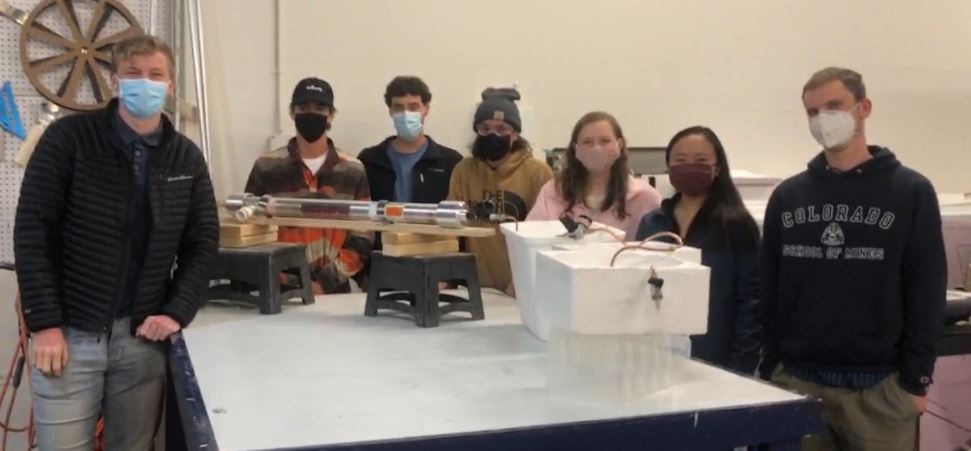

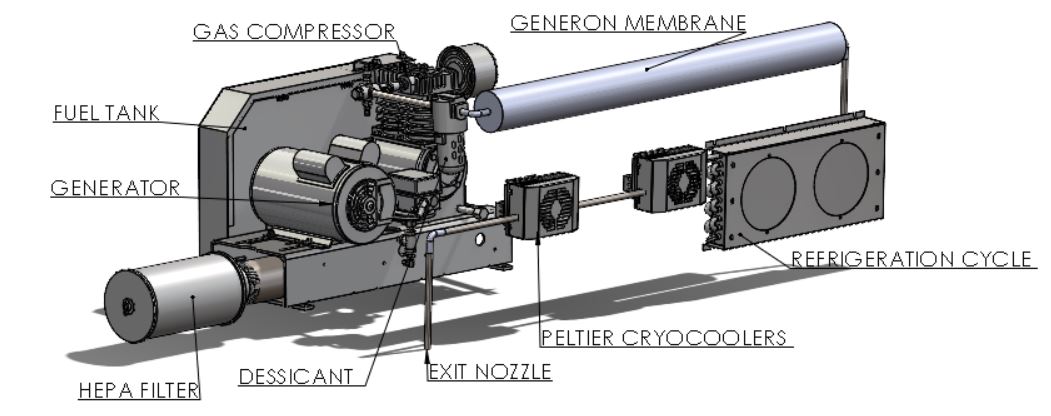
Live Zoom Chat
Use the link below to join us live from 8:00 – 10:30 a.m. on December 3.
Join from PC, Mac, Linux, iOS or Android: https://mines.zoom.us/j/2167324363?pwd=Q0UyNmR2a3lrYllwYVduMDhlZndiUT09
Password: 951898
Team Members
- Johnathan Stacy
- Joseph Wolfe
- Antonio Delany
- Sam Vaden
- Olivia Schoening
- Marissa Steagall
- Joshua Shaver
The Client
- Venture Aerospace
Acknowledgements
Project Advisor: Donna Bodeau
Technical Advisor: Dr. Vaughan Clift, Sasha Ludwig-Mela, Vivian Nguyen
Donations Made by: Venture Aerospace
Video
Elevator Pitch
The Gas Powered Fire Extinguisher team designed an energy efficient and environmentally friendly solution to fight wildfires. The design extracts the Nitrogen gas that makes up 70% of earth’s atmosphere and cryogenically cools it down to liquid temperatures which in turn can be formed into boluses that will be deployed around the base of a fire to extinguish the flames. The system will eventually be attached to an energy efficient drone developed by the company that has a maximum weight capacity of 500 pounds with an 8 hour flight time. The use of nitrogen is extremely environmentally friendly and will continuously work for the duration of the drone.
Design Approach
Our design approach was to verify each subsystem of the fire extinguisher separately. Due to the large number of variables present and the need to utilize devices beyond their given specifications, our design approach was largely based on designing and completing small scale experiments to verify their effectiveness. Our client assisted us with the design by making recommendations on what components to use in each stage, and ordering those components from third party companies. We worked with our client in designing experiments and ascertaining possible sources of error which we needed to try to eliminate or account for in further testing.
The first stage of the fire extinguisher we tested was the process of extracting water vapor from the air. We performed several experiments to test the effectiveness of different air drying systems and ultimately decided on a desiccant system. In our experiments, we used two electronic humidity sensors to detect the humidity of the airflow before and after it flowed through the desiccant. The results of this test proved the desiccant removed humidity at a rate satisfactory to our project.
Next we designed and tested the subsystem responsible for separating oxygen from the airflow using a Generon membrane. We set up experiments to test the effectiveness of the membrane in separating oxygen from the airflow using an oxygen sensor to measure the oxygen concentration. We also used an anemometer to measure the volumetric flow rate, or CFM [cubic feet per minute], of the nitrogen flowing out of the generon membrane. This flow rate was used to find an estimate for the mass flow rate of the nitrogen and calculate power requirements for the cryocooler in the final stage. We also varied two of the control variables; input pressure driven by the compressor and output pressure at the exit of the generon membrane. These variables were plotted to find a relationship between the oxygen concentration and CFM of the air flowing out of the generon membrane.
In the third stage, we simulated a cryocooler to cool down the nitrogen and convert it from a gas to a liquid. We used our experimental results from the generon membrane experiment to compute an estimate of the power required for the cryocooler to cool down the nitrogen a sufficient amount. In order to simulate a cryocooler for testing purposes, three cooling baths were set up; one bath contained ice water, the second bath contained alcohol and dry ice, and the third bath contained liquid nitrogen. We connected three coils together and submerged each one in each of the baths. We used the compressor to drive air through the generon membrane, so that the nitrogen flowing out of the generon membrane would flow through the coils submerged in each of the baths, causing the temperature of the nitrogen to decrease. Our goal was to determine whether or not this simulated cryocooler could successfully produce liquid nitrogen and expel it from the fire extinguisher which was then proven in our tests.


Design Solution
Based on the initial testing phases completed, the final prototype was constructed. Air was pressurized with a 12 gallon compressor the client provided and sent through a desiccant to dry the air. A dessicant was chosen over the peltiers due to the lack of power requirements in the beads as well as a longer life span for the overall design. After the drying stage, the pressurized air was sent through a Generon membrane that uses an exclusion membrane to extract the Nitrogen from the atmosphere. The Nitrogen gas is then cryocooled in a three-stage cooling process which mimics what an expensive cryocooler would produce.
Cooling the gas in stages prevents the Nitrogen from cooling too fast and freezing the system. An ice water bath cools the gas to approximately 4 degrees Celsius. The pressure is then released, allowing the gas to cool down even further due to the Ideal Gas Law. The next stage consisted of dry ice in ethanol, which can achieve a low temperature of approximately -90 degrees Celsius. The final stage of cooling was utilizing Liquid Nitrogen which cooled the gas down to liquid temperatures of -196 degrees Celsius. Pressure valves in between each cooling stage allowed more control in the system overall to prevent the gas from freezing since the difference between solid and liquid nitrogen is only 12 degrees.
Our team was able to achieve an output of liquid nitrogen extracted from the atmosphere at roughly 26 mL/min, roughly 70 mL/min below the original goal of 100 mL/min; however, this lower number can be attributed to the compressor’s inability to maintain the necessary pressure of 135 psi. The liquid nitrogen was collected in a styrofoam container and then poured around the base of a fire to extinguish the flames. Overall, this solution was able to produce a working prototype of the system and proves the concept of Nitrogen extracted from the atmosphere can be used to eliminate a fire.
Next Steps
After several testing iterations, we developed a few recommendations for this project as it continues into the future. The first would be the addition of a more powerful compressor. During testing we found that the compressor could only hold an ideal pressure of 135 psi for under a minute. This not only created problems in testing, but it showed that a more powerful, gas-powered compressor is necessary for the project to be successful. The second recommendation relates to the cooling portion of the design. Our current solution provided us with an inexpensive solution to reach cryogenic temperatures. However, in the future, we recommend having the nitrogen pass through a refrigeration cycle and cryocooler before being released out of the fire extinguisher. These additions, though out of our budget, would provide a practical solution to cool the nitrogen into a liquid. Finally, we recommend utilizing some of the compressed air released from the compressor to project the liquid nitrogen out of the fire extinguisher and as close to the fire as possible. With these improvements we feel that our system will not only be fully functional, but will become crucial to fighting wildfires in the future.
Meet the Team
Johnathan Stacy
 Johnathan Stacy is a Mechanical Engineer with an emphasis in Aerospace Engineering and will be graduating in May of 2021. He enjoys basketball, hiking, and hanging out with friends during his free time. Once graduated, he plans on working in Houston as a Design Engineer.
Johnathan Stacy is a Mechanical Engineer with an emphasis in Aerospace Engineering and will be graduating in May of 2021. He enjoys basketball, hiking, and hanging out with friends during his free time. Once graduated, he plans on working in Houston as a Design Engineer.
Joseph Wolfe
 Joseph Wolfe is a Mechanical Engineer with an area of emphasis in Aerospace Engineering. He will be graduating this May. He is on the Cross Country and Track team at Mines and enjoys anything outdoors.
Joseph Wolfe is a Mechanical Engineer with an area of emphasis in Aerospace Engineering. He will be graduating this May. He is on the Cross Country and Track team at Mines and enjoys anything outdoors.
Antonio Delany
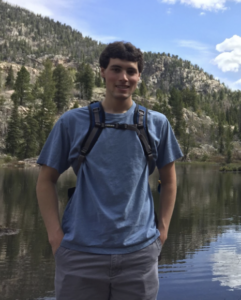 Antonio is a Mechanical Engineer with a minor in International Relations. His hobbies include hiking and spending time outdoors. He is graduating May 2021 and hopes to work in the aerospace industry after graduation.
Antonio is a Mechanical Engineer with a minor in International Relations. His hobbies include hiking and spending time outdoors. He is graduating May 2021 and hopes to work in the aerospace industry after graduation.
Sam Vaden
 Sam Vaden is a Mechanical Engineer graduating in May. He enjoys skiing, golfing, rock climbing and anything else outdoors. He plans on living and working in the Denver area after graduation.
Sam Vaden is a Mechanical Engineer graduating in May. He enjoys skiing, golfing, rock climbing and anything else outdoors. He plans on living and working in the Denver area after graduation.
Olivia Schoening
 Olivia is a Mechanical Engineer! Her hobbies include cooking, reading, and playing with dogs! She plans on moving to Chicago this summer.
Olivia is a Mechanical Engineer! Her hobbies include cooking, reading, and playing with dogs! She plans on moving to Chicago this summer.
Marissa Steagall
 Marissa is a Mechanical Engineer with a minor in Computer Science. Her hobbies include hiking and spending time with friends. She is graduating this coming May 2021 and will be working full time as a Product Development Engineer for Sana Health.
Marissa is a Mechanical Engineer with a minor in Computer Science. Her hobbies include hiking and spending time with friends. She is graduating this coming May 2021 and will be working full time as a Product Development Engineer for Sana Health.
Joshua Shaver
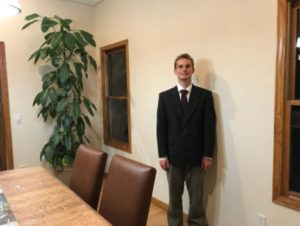 Josh Shaver is an Electrical Engineer with two minors in Computer Engineering and Engineering Physics. He will be graduating in May 2021. His hobbies include running, hiking, golfing, and reading.
Josh Shaver is an Electrical Engineer with two minors in Computer Engineering and Engineering Physics. He will be graduating in May 2021. His hobbies include running, hiking, golfing, and reading.

